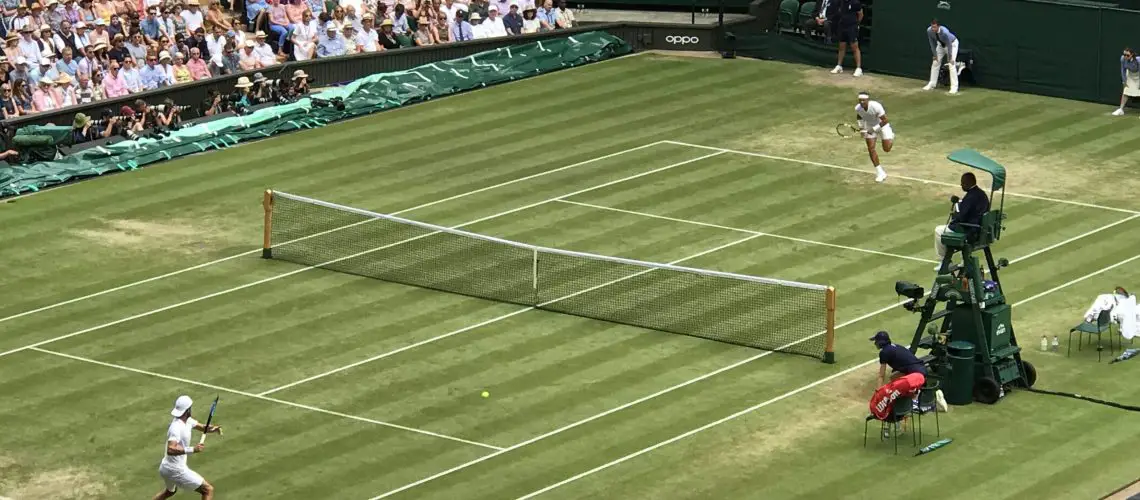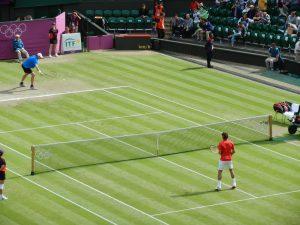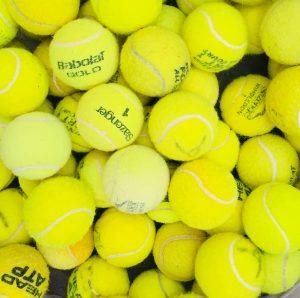We may earn money or products from the companies mentioned in this post.
Introduction

Welcome to this exciting blog on the world of tennis and the crucial role that break points play in a match Tennis is a sport that requires skill, strategy, and mental fortitude Break points are intense moments during a match that can turn the tide in favor of one player or another In this blog, we will delve into the definition and significance of break points, exploring how they can make or break a player’s chances of winning
Definition of Break Points in Tennis
In tennis, a break point occurs when the server is at risk of losing their service game If the receiver wins the point during a break point situation, they “break” their opponent’s serve and gain an advantage in the set or match Breaking serves is an essential part of winning matches as it allows players to seize control and put pressure on their opponents
Importance of Break Points in a Match
Break points are pivotal moments that often determine who emerges victorious in a tennis match They represent opportunities for players to disrupt their opponent’s rhythm and potentially shift momentum in their favor The ability to convert break points can be a game-changer, allowing players to gain valuable advantages such as taking control of sets or building substantial leads
On the other hand, defending against break points is equally crucial for players holding serve It requires mental toughness and strategic shot selection to save these critical moments from slipping away Successfully defending against multiple break points can demoralize opponents while boosting confidence for those who manage to hold serve under pressure
Overview of Blog Sections
This blog will explore various aspects related to break points in tennis:
- The psychology behind break point situations: How players handle pressure and maintain focus during pivotal moments
- Strategies for converting break points: Techniques and tactics that can increase the chances of winning these crucial points
- The art of defending against break points: Effective strategies to save service games when under pressure
- Famous break point moments in tennis history: A look back at some memorable break point situations that shaped the outcome of matches and careers
So, whether you are a passionate tennis fan or an aspiring player looking to enhance your understanding of the game, this blog will provide valuable insights into the world of break points in tennis Let’s dive in and discover the intricacies behind these pivotal moments!
Understanding Break Points: The Basics

Tennis is a sport that thrives on strategy and skill To fully grasp the intricacies of the game, it’s crucial to understand break points These pivotal moments can turn the tide of a match and make all the difference between victory and defeat
Scoring system in tennis
In order to comprehend break points, we must first familiarize ourselves with the scoring system in tennis Unlike most sports, tennis doesn’t rely on traditional point systems Instead, it uses a unique scoring method
-
Point values:
In tennis, points are counted as love (0), 15, 30, and 40 Each time a player wins a point, their score increases accordingly -
Deuce and advantage situations:
When both players reach a score of 40, it’s known as deuce To win the game from this position, a player must secure two consecutive points If one player wins a point after deuce, they gain “advantage” and have an opportunity to win the game with another successful point
How break points are achieved
A break point occurs when the receiver has an opportunity to win the game while their opponent serves
-
Definition and explanation of “break”:
In tennis terminology, breaking serve means winning a game against your opponent’s serve It is considered advantageous because you gain control over your opponent’s service games -
Scenarios for achieving a break point:
- a) Receiver at advantage while server is at deuce: This situation arises when the receiver has won a point after deuce, giving them the advantage If they win the next point, they will secure a break point
- b) Receiver at 30 or more when server is at 40: When the receiver’s score reaches 30 or above and the server’s score is 40, it presents an opportunity for the receiver to achieve a break point by winning the following point
Types of break points
Break points can come in various forms, each carrying its own significance within a match:
-
Single break point:
This occurs when the receiver has one chance to win their opponent’s serve game -
Double break point:
In this scenario, the receiver has two consecutive chances to break their opponent’s serve It increases their odds of success and puts additional pressure on the serving player -
Single-double-triple-break-point situation:
This refers to a sequence where multiple consecutive break points occur For example, if the receiver fails to convert two break points in a row but manages to earn another opportunity right away, it becomes a triple-break-point situation
The understanding of break points is key to comprehending tennis at a deeper level These critical moments can shift momentum and determine who emerges victorious on the court By analyzing different scenarios and types of breaks, players and fans alike gain valuable insights into how matches unfold
Strategies to Capitalize on Break Points: Tips for Players

When it comes to break points in a tennis match, both the receiver and the server have their own set of strategies that can make all the difference Let’s take a closer look at some tips for each player to maximize their opportunities:
For the Receiver
1 Analyzing opponent’s serving patterns:
One key strategy for receivers is to carefully analyze their opponent’s serving patterns By identifying any predictable tendencies, such as favoring certain corners or relying heavily on a particular serve type, receivers can gain valuable insights into where they should position themselves and how they should anticipate the serve
2 Attacking weak second serves:
The second serve is often an area where players are more vulnerable Receivers should be on high alert for any weak second serves that present an opportunity to go on the offensive By capitalizing on these weaker serves with aggressive returns, receivers can put pressure on their opponents and increase their chances of winning crucial break points
3 Maintaining aggressive returns but avoiding unforced errors:
While aggression is key when returning serves during break points, it’s essential for receivers to strike a balance between attacking shots and minimizing unforced errors By staying focused and executing well-placed shots without taking unnecessary risks, receivers can keep control of the rally and increase their chances of breaking their opponent’s serve
For the Server
a) Staying focused under pressure:
Serving during break points can be extremely nerve-wracking, but maintaining focus is crucial for servers By mentally preparing themselves and staying calm under pressure, servers can deliver accurate serves that will give them an advantage in defending against break point opportunities
b) Mixing up serves to keep receiver guessing:
Avoiding predictability is key for servers By mixing up their serves, including varying the speed, spin, and placement, servers can keep receivers guessing and make it more challenging for them to anticipate the next shot This element of surprise can disrupt the receiver’s rhythm and increase the server’s chances of holding onto their serve
c) Utilizing body serve to limit return options:
The body serve is a strategic weapon that servers can employ during break points By aiming at the receiver’s body, servers limit their opponent’s angle of return and force them into a more defensive position This not only decreases the likelihood of an aggressive return but also increases the chances of an error from the receiver
Conclusion

After delving into the intricate details and exploring various aspects of the topic at hand, it is apparent that a strong and well-crafted conclusion is essential to wrap up any piece of writing The conclusion serves as the final opportunity to leave a lasting impression on the reader and solidify your arguments or findings
The Power of Summarizing
A well-written conclusion should begin by summarizing the main points discussed throughout the article This concise recap allows readers to quickly refresh their memory on the key takeaways without having to revisit the entire piece By presenting these key points in a succinct manner, you ensure that your audience fully comprehends and retains the information you’ve shared
Imparting a Sense of Closure
In addition to summarizing, a good conclusion should also provide closure to your readers This closure can be achieved by restating your thesis statement or main argument in a clear and impactful way By doing so, you remind your audience of what they have learned and reinforce the significance of your work
Furthermore, offering a sense of closure involves leaving no loose ends or unanswered questions Take this opportunity to tie up any remaining threads, address counterarguments, or suggest avenues for further research or exploration
Eliciting an Emotional Response
A memorable conclusion goes beyond logical reasoning – it appeals to emotions as well By connecting with readers on an emotional level, you can leave a lasting impact that resonates long after they finish reading Consider using poignant anecdotes, thought-provoking quotes, or powerful metaphors that evoke feelings related to your topic
Remember that emotions can be harnessed not only through words but also through language style and tone Employing an empathetic tone in your conclusion helps establish trust and rapport with your readers, making them more receptive to your message
Call to Action
Last but not least, a compelling conclusion should end with a call to action This can be an invitation for readers to reflect on the information presented, apply it in their own lives, or take specific steps towards further engagement or learning By motivating your audience to take action, you provide them with a sense of agency and inspire them to make meaningful changes
In conclusion (pun intended), crafting an effective conclusion is a crucial element of any well-written article By summarizing key points, providing closure, evoking emotions, and issuing a call to action, you can leave your readers feeling informed, empowered, and inspired So go ahead – give your writing the powerful ending it deserves!
Useful Links

Crucial steps to convert break points
What Is A Break Point In Tennis? Definition & Meaning …
What Is a Break Point In Tennis? – All The Details
Why is a break point in tennis so crucial?
What Is A BreakPoint In Tennis? | Authentic Details
Tennis Scoring: Points, Sets & Games | Tennis Rules
Can Netflix’s Break Point revitalise tennis?
Netflix’s ‘Break Point:’ What You Should Know Before …
Not Sure What a Break Point Means in Tennis? Here’s …
Measuring the Impact of Break Points – Heavy Topspin
Break Points Saved | ATP Tour | Tennis
‘Break Point’ Tennis Docuseries Release Date, Cast, Trailer
What Is Break Point Tennis? Definition of …
Which tennis players are in Break Point?
Break points
Break Point: The Inside Story of Modern Tennis
Break Point (2023 TV series)
Break Point Misses Why Tennis Really Inspires Love






